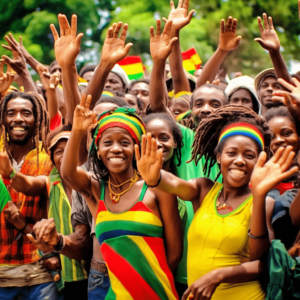
Fascinating Histories Behind Popular Airlines Names
Have you ever stopped and wondered why some of the world’s most successful airlines have the names they do? From mission statements to company slogans, there’s a story behind many popular airline names that’s steeped in history, giving passengers much more than transportation from one place to another. Learn about the fascinating tales of a few popular carriers and be in awe of the intricate ways they’re connected to the history of aviation.
-
JetSphere Airlines
-
SkyGlide Airways
-
Kamba Kite Airlines
-
Tigray Trail Airways
-
Ashanti Air Airlines
-
Esperanza Echo Airlines

Names Of Airlines
For instance, American Airlines’ original name was American Airways, first taking off in 1930 when it merged three smaller airlines. Operating core domestic routes throughout the US and connections between select major cities, American Airways was acquired by American Airlines in 1934 and the focus shifted toward providing an extensive network of long-distance international flights. Soon after, the style of American Airlines logo was unveiled, with the eagle and block lettering signifying reliability and strength.
Then there’s KLM
(Koninklijke Luchtvaart Maatschappij). Established in1919, its first flight was made a year later, connecting the Netherlands and the UK. It’s one of the world’s oldest airlines still operating today, yet it still manages to stay on trend—it was the first carrier to have an in-flight magazine. Symbolizing their commitment to the cutting-edge and vigorous motivation for positive transformation, KLM’s core service is ensuring passengers get where they need to go safely and on time.
Next, let’s look at Air France. Not only did it become the first airline to offer transatlantic flights in 1946, but it also adopted the symbol of a stylized version of the tricolor from the French flag, showing patriotism to its home country. Even more fascinating is that Air France is named after an ‘Aero-Club de France’, a society created in 1898 to promote the development of aviation in France.

Other AirlineName Sources
But other airlines take their names from their home countries, such as Singapore Airlines, which was established in 1947 and quickly established itself as one of the country’s leading brands. Singapore Airlines is the only five-star rated airline in the world for its remarkable dining experience, with emphasis on providing local cuisines.Similarly Qatar Airways carries the namesake of its country in its name. Taking flight in 1994, Qatar Airways quickly became known for its exceptional service, good value, and innovative in-flight entertainment. It was the first airline to install the seatback TVs, paving the way for the on-demand era that we live in now.
Now let’s also shift our focus to Emirates, one of the Middle East’s major airlines. Taking its cue from the country’s wealth of trading tradition, the company’s name is derived from the Arabic word for “trader”. Emirates also chose its well-known script logo to represent its Arabic origin, perfectly balancing classic calligraphy with modern technology.
Finally, United Airlines was set up in 1926 and kept the ‘United’ in their name to pay homage to the integration of four major US airlines. Embracing the forward-thinking spirit of its airline, United Airlines chose the balloon as its symbol, taking many by surprise when it first took off.
All these stories captivate travelers and encapsulate the values and intentions of how these airlines emerged. Where does the company get its historical inspiration from? With their eye-catching logos branding them worldwide, these stories connect passengers to a long history of flight that is still poignant today and reveal an exciting world of artistry behind airline identity.
How to Name an Airline
The intriguing names and logos behind the aviation industry are what draw passengers to the airlines and motivate them to make wise choices. These unique logos encompass a brand-centric approach for building customer loyalty.
Engaging customers is something that most airlines struggle with, but through logo design and rebranding, airlines have the ability to build a powerful narrative related to their services. It’s no wonder that a visually stimulating logo has become a crucial part of airline branding, prompting airlines to design with confidence and purpose.
Airlines Name With Logo
Logo design involves more than just creating an aesthetically pleasing design, it’s also about telling a story and giving people a reason to connect and travel with the airline. By creating a vivid backstory relating to the airline’s mission and values, unified branding is established and loyalty is reinforced.
The lure of being transported to new horizons can often be the pull the brings passengers to an airline, so it’s essential for logos to have depth and meaning to make a lasting impact. When designed thoughtfully, logos have the potential to take those who view them on an unforgettable journey.
Airlines Flight Experience
Similarly modern transportation creates an opportunity to appreciate the destination before you have arrived. Airlines such as KLM emphasize a flight experience that reflects the culture of their home country. They strategically choose to include elements of the Netherlands in their marketing, creating a strong sense of place and nostalgia when travelers fly with them.
Qatar Airways also sets an example of tapping into local culture for unique in-flight experiences. For example, they offer passengers flying in their Business and First Class cabins a “Discover Qatar” in-flight entertainment deal that exposes them to the history, culture, and nature of Qatar.
When customers are presented with a culture-specific experience that highlights the destination, they’re more likely to have a positive experience. Singapore Airlines is a true pioneer in this, having throughout its history presented customers with an excellent onboard experience. This has enabled them to cultivate a very loyal customer base.
Air France also remains at the forefront when it comes to delivering a memorable in-flight experience. Air France not only makes it an effort to create an unrivaled onboard experience, but also to maintain that same level of quality when you reach your destination.
American Airlines, too, stands out in this respect. Whether it’s at the airport terminal or during the flight itself, they strive for extraordinary hospitality and innovation. Furthermore, they had the foresight to become one of the first airlines to offer Wi-Fi on nearly every flight.
Seeing intangible assets such as customer loyalty and appreciation come alive entails combing insightful ideas with a passion for service excellence. Insisting on the highest level of customer service and satisfaction, these airlines have long been the pioneers of global aviation and continue to be the perfect embodiment of the industry.
Airline names – Branding
These airlines prove that successful branding isn’t just about acquiring customers, but also keeping them engaged and providing them with an outstanding customer experience. United Airlines for example has branded itself as the go-to airline when it comes to customer service and safety. Even after more than 90 years of operation, the company still offers their passengers something truly special that keeps them flying with United Airlines.
It’s clear that a lot of effort is put into a brand’s identity and end user experience, which ultimately authenticates a brand’s cause or message. If you consider all that the airlines have achieved, the thought-provoking stories behind the names paint a compelling image of the history of aviation. Why not take a closer look and discover what the logos of some of the world’s most prominent airlines are all about?
The stories behind the most popular airlines reveal a lot of fascinating facts, such as Emirates’ name being derived from a meaning that resonates with the company’s identity as a trader. Similarly Singapore Airlines is a proud champion of its country’s culture, having made a name for itself as one of the most well-known five-star airlines in the world.
It’s amazing that we can learn about aviation history and brand identity through popular airlines. Airlines like Qatar Airways, KLM, Air France and United Airlines have all embraced their heritage and made it part of their identity. We can see that their logos signify much more than just an aesthetic choice; they celebrate the culture and spirit of the nation they hail from.
Technology has tremendously transformed the airline industry and made it even more interactive. Airlines have capitalized on this by creating in-flight experiences for their passengers to enjoy, such as KLM’s in-flight magazine, American Airlines providing Wi-Fi on nearly every flight, and Singapore Airlines meticulous attention to detail in their onboard dining experience.
These airlines have also managed to magnify their brands by unifying their visual content and online presence. Whether it’s through innovative websites or creative social media campaigns, these airlines work hard to ensure their message is seen by the right people.
Airlines Logos
Logo design plays an important role in creating a unique brand identity for airlines. Muslim-friendly airlines like Qatar Airways for example, use the Arabic lettering in their logo as a symbol of pride in their heritage.
Modern airlines such as KLM have also found great success in creating logos that are easy to recognize and known for their bright and modern design. This kind of consistency encourages a sense of cohesion between branding elements and ultimately supports customer loyalty.
These stories showcase how each airline has put its own spin on the industry and successfully created a brand that is rooted in culture and heritage with a modern twist. Although driven by some very different missions, these airlines each have the same goal: to provide the ultimate experience for their passengers.
So why not book a flight and explore for yourself? The airline industry is constantly evolving, and with it comes the chance to uncover the captivating stories that give us insight into the histories behind some of the world’s most popular airlines.
Table of Contents






